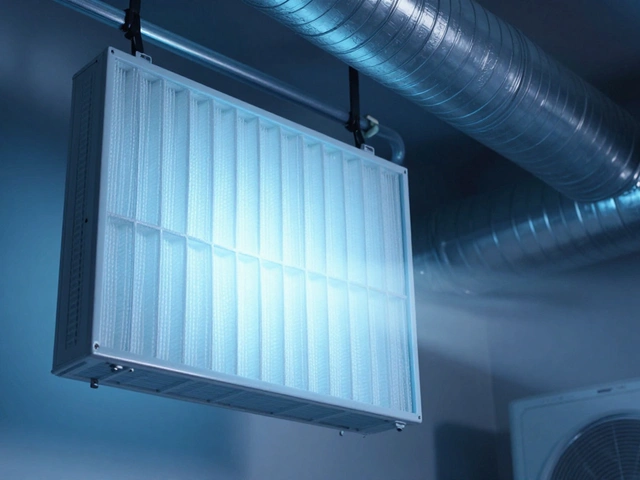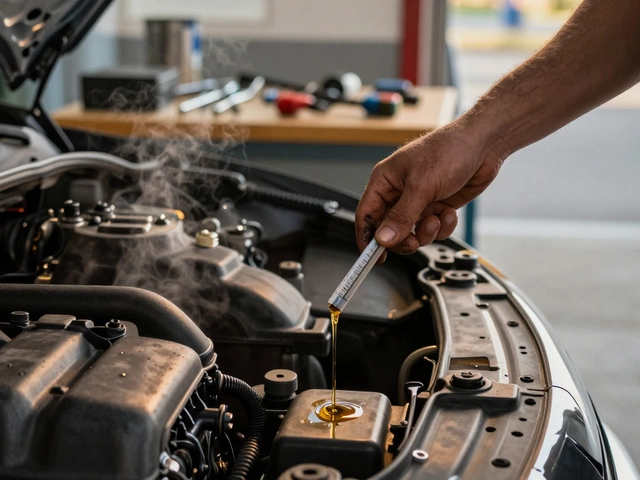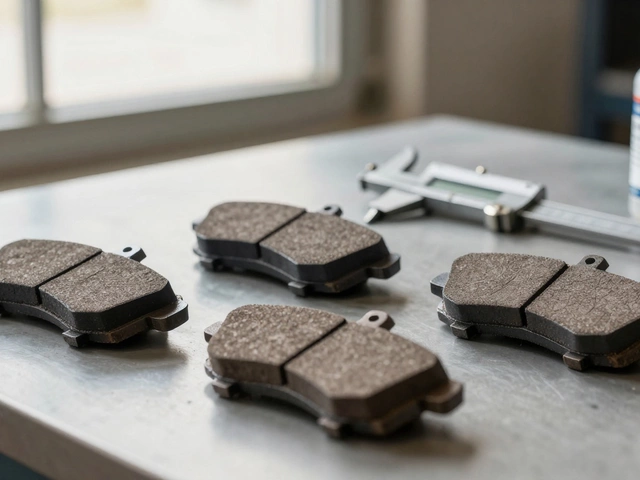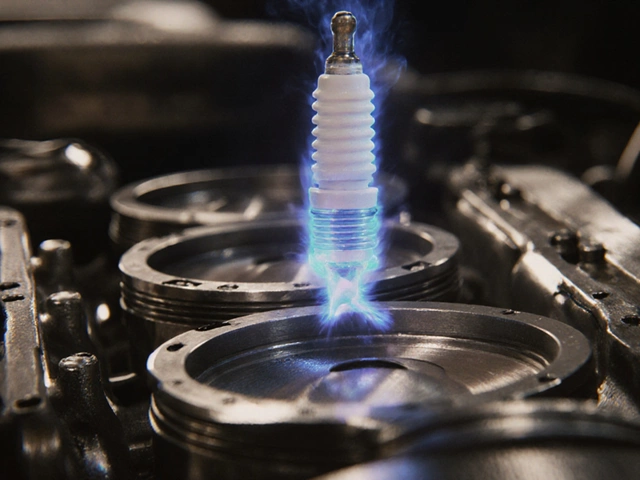Your car’s radiator doesn’t get much attention until something smells weird or the temperature gauge is higher than your comfort zone. Most folks ignore it until steam’s pouring out on the shoulder of a highway, but a busted radiator can quietly wreck your engine long before that dramatic moment.
So, is swapping out that old radiator worth the cash? If you’re hoping to get another few years from your car, ignoring a failing radiator is almost like waiting for your dog to gnaw your favorite shoes—risky and expensive. Radiator troubles often start small: maybe you spot a puddle under your parked car or your heat gives up on the coldest morning. These are red flags, not just annoyances. The cost of fixing a cooked engine will make you wish you bit the bullet on a radiator replacement.
- How a Radiator Actually Works
- When Does a Radiator Need Replacing?
- Real Costs: Is It Worth It?
- Tips to Get the Most Out of Your Radiator
How a Radiator Actually Works
Let’s get real: your car produces a ridiculous amount of heat every time you drive. Without a working radiator, that heat would bake your engine in an afternoon. The car radiator is the main player in keeping things cool. It sits at the front of your car, right behind the grill, so fresh air funnels through the radiator’s thin metal fins when you’re moving.
The system is pretty simple when you break it down. Here’s what happens step by step:
- Coolant (think fancy antifreeze) cycles through your engine, picking up heat as it goes.
- That hot coolant heads to the radiator, where all those metal fins let air suck the heat away fast.
- The fan kicks in, especially when you’re idling or stuck in traffic, to move extra air through the radiator.
- The now-cooler liquid goes back into the engine and repeats the cycle, over and over.
Some newer cars use temperature sensors to control how much coolant gets cooled or routed, but the main idea never changes. Check out these real-world radiator stats that show why this part is a workhorse:
| Radiator Fact | Typical Value |
|---|---|
| Operating Temperature Range | 190–220°F (88–104°C) |
| Coolant Capacity (Mid-size sedan) | 1.2–1.8 gallons |
| Average Life Span | 8–10 years or 100,000 miles |
| Normal Engine Heat Produced | Up to 4,000 BTU/minute |
If the radiator clogs, leaks, or the fins get banged up (maybe from a stray rock or a fender bender in the parking lot), that cooling magic wobbles fast. When the radiator can’t do its job, you’ll end up on the side of the road, or worse—forking out big bucks for engine repairs.
When Does a Radiator Need Replacing?
Your car radiator is always at work, but it’s easy to forget about it—at least until stuff starts going wrong. Most radiators last between 8 to 10 years when you keep up with regular coolant flushes and don’t ignore small leaks. But some signs shout that your radiator’s time is up:
- Coolant leaks: If you spot green or orange puddles under your ride, your radiator might have a crack. Ignoring leaks can kill your engine, not just your driveway.
- Overheating: Even one episode where your temperature gauge spikes into the red means your radiator isn’t keeping up. Engines don’t forgive much heat—ask anyone who's paid for a replacement block.
- Rust or sludge in the coolant: Pop that radiator cap (only when the engine’s cool!) and check for gunky, brown sludge. That gunk blocks flow and wrecks metal inside the engine.
- Frequent need to add coolant: Topping off every few days usually traces back to a bad radiator or a sneaky hose.
- Visible damage: Fins bent to oblivion, white crusty residue, or corroded metal all point to trouble.
Some rides will throw a check engine or temperature warning, but don’t count on the dash to yell every time. Radiators can fail quietly. Mechanics say the #1 mistake is ignoring little drips and spikes—they only get worse and way more expensive.
| Symptom | Possible Cause | What Could Happen |
|---|---|---|
| Consistent overheating | Internal blockages, low coolant, old radiator | Blown head gasket, engine failure |
| Coolant leak | Cracked radiator, bad seal | Engine overheating, roadside breakdown |
| Brown coolant/sludge | Corrosion, mixing coolant types | Clogged passages, heater failure |
If you keep catching one of these issues, it’s usually cheaper in the long run to get a new radiator than to gamble with your engine. Towing your car home because of a busted cooling system is no fun—trust me, Max the dog found it way more exciting than I did.

Real Costs: Is It Worth It?
Here’s the honest scoop—replacing a car radiator is not exactly cheap, but it’s usually way less painful than letting your engine overheat and seize up. On average, you’re looking at $350 to $900 for a radiator replacement at a shop, parts and labor included. For luxury or performance cars, that number can climb past $1,000. Taking the DIY route can save a lot since most regular car radiators run from $80 to $300, but that’s if you’re good with a wrench and don’t mind getting your hands dirty.
You might be tempted to just fix a small leak or use stop-leak products, but these are usually band-aids that can leave you stranded sooner than later. If your radiator fails, your car is dead until it gets fixed. Worse, a cooked engine repair can reach $3,000 to $7,000 depending on the make and damage. Not replacing the radiator when it’s done usually adds up to some of the most expensive bills you’ll ever see for car maintenance.
Check out the breakdown below. It’s not just a scare tactic—it’s real numbers from 2024 shop data:
| Repair/Replacement | Average Cost (USD) |
|---|---|
| Radiator Replacement (standard car) | $350 - $900 |
| Radiator Part Only (DIY) | $80 - $300 |
| Temporary Leak Sealer | $10 - $35 |
| Engine Replacement (due to overheating) | $3,000 - $7,000 |
If your car is near the end of its life or barely worth $900, maybe you hold off. But if you want your car to keep running reliably, replacing the radiator is way cheaper than an engine meltdown. Some mechanics say it straight—ignore the radiator, and you might as well schedule an engine burial soon after. Also, don’t forget, a healthy radiator keeps the rest of your cooling system (like your water pump and thermostat) from aging double time.
It’s not just about today’s fix; it’s about dodging big headaches down the road. Play it safe or roll the dice—it’s your wallet, but the odds aren’t in your favor if you let it slide.
Tips to Get the Most Out of Your Radiator
If you’d rather not blow a paycheck on car repairs, keeping your car radiator in shape is the smarter move. You don’t have to be a hardcore gearhead to squeeze more life out of your radiator—a little common sense goes a long way.
- Check coolant levels often: Pop the hood and eyeball your coolant once a month. Low coolant is a red flag. If it keeps dropping, you might have a leak.
- Flush the system: Car makers usually suggest flushing your radiator every 30,000 miles or every couple of years. Old coolant turns acidic and messes with metal parts, so swapping it out matters.
- Look for rust and gunk: Brown sludge, weird colors, or floating stuff in the coolant means trouble. If you see this, don’t wait for a breakdown—get it cleaned out.
- Check hoses and clamps: Plump or cracked hoses, loose clamps, or white crusty residue all signal leaks. Tighten or replace anything dodgy before it becomes a bigger headache.
- Watch the temperature gauge: If you spot it creeping up past its usual spot, don’t brush it off. Overheating can fry your engine. Sometimes, a stuck thermostat or broken fan is the real culprit, but ignoring it wrecks radiators quick.
Cheap “stop-leak” fixes? Skip them. They usually gum up your cooling system even worse. And if you’re using water instead of proper coolant, you’re asking for rust and overheating issues. Always go with the coolant mix recommended in your owner’s manual.
Finally, if you hear bubbling or smell sweet syrup from under the hood, pull over and investigate before things get serious. A little paranoia pays off when it’s your engine on the line.










Write a comment